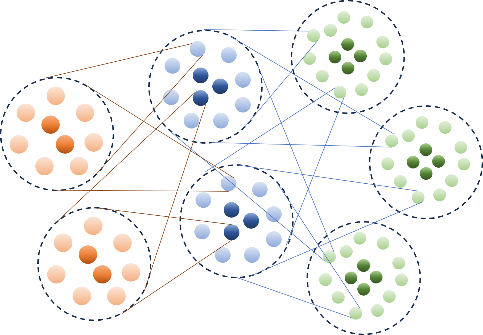Progress Report
Research and Development of Theory and Software for Fault-tolerant Quantum Computers[3] Development of quantum error correction schemes and analysis of performance
Progress until FY2024
1. Outline of the project
In order to relax hardware requirements and improve the performance of fault-tolerant quantum computers (FTQC), it is essential to add new options at each layer, not just a combination of existing schemes. Under this theme, we will pioneer new schemes for quantum error correction and fault-tolerant quantum computation architectures through various approaches.
2. Outcome so far
1) Bridging the gap between NISQ and FTQC
There is a gap of several orders of magnitude in the number of qubits that can be meaningfully utilized or necessarily required for NISQ (Noisy Intermediate-Scale Quantum computer) (around 100 qubits) and FTQC (around 1 million qubits). In this research, we have been working to fill those gaps. In this research, we have been exploring a new area called early FTQC that bridges those gaps.
As a software approach, we have developed a framework for applying quantum error mitigation method conventionally applied for NISQ to logical qubits encoded in error-correcting codes and have shown that sufficiently high computational accuracy can be achieved even with small size codes. Then, the number of physical qubits required can be reduced by as much as 80% in the area where the proposed method works most effectively [PRXQuantum, 2022].
As an architectural approach, we developed a new concept, early-FTQC architecture. There, only Clifford operations, which are relatively easy to be protected, are protected by error correction, and non-Clifford operations are performed by generating special ancilla states with high accuracy via error detection.
It was shown that even with an error probability of 104 and 10,000 physical qubits, a quantum volume of 264 can be achieved (QV=237 is the limit in NISQ). This indicates that deeper quantum computation, which is difficult to simulate even with a classical supercomputer, can be achieved even on a 10,000-qubit scale [PRX Quantum 2024].
Furthermore, the resource estimation results show that simulations of the Hubbard model, which are important for applications, can be performed faster on a quantum computer with tens of thousands of qubits than on a supercomputer, providing promising quantum advantage in the near future [PRX 2025].

2) Zero-level magic state distillation
A bottleneck in fault-tolerant quantum computation is the large spatio-temporal cost required for magic state distillation, which is necessary to protect the T operations required for universal quantum computation from errors. To solve this problem, we constructed a magic state distillation using physical qubits arranged on a square lattice instead of logical qubits, which significantly reduced the time-space cost required for the distillation compared to the conventional logical-level distillation [PRX Quantum 2025]. Inspired by this achievement, magical state cultivation has been developed.
3) Ultimate efficiency of FTQC in the large-scale limit
The FTQC fights against errors by using redundant qubits and carrying out extra computational steps. Seeking the minimum of these overheads in space and time is one of the fundamental questions on FTQC. We have proposed a new architecture based on concatenation of simple error correcting codes with growing sizes and showed that its space and time overheads are smaller than any other known architectures. [Nature Physics, 2024]

3. Future plans
We seek to provide new options for cross-layer co-design by not only improving surface codes but also exploring new quantum error correction codes such as topological color codes and more general quantum LDPC codes. We will also propose novel methods that can be demonstrated on small-scale quantum computers, such as partial fault-tolerant quantum computation architectures and zero-level magical state distillation, and evaluate resources based on these methods to explore applications that are feasible and advantageous on quantum computers that are expected to be realized in the near future at the 10,000-qubit scale.